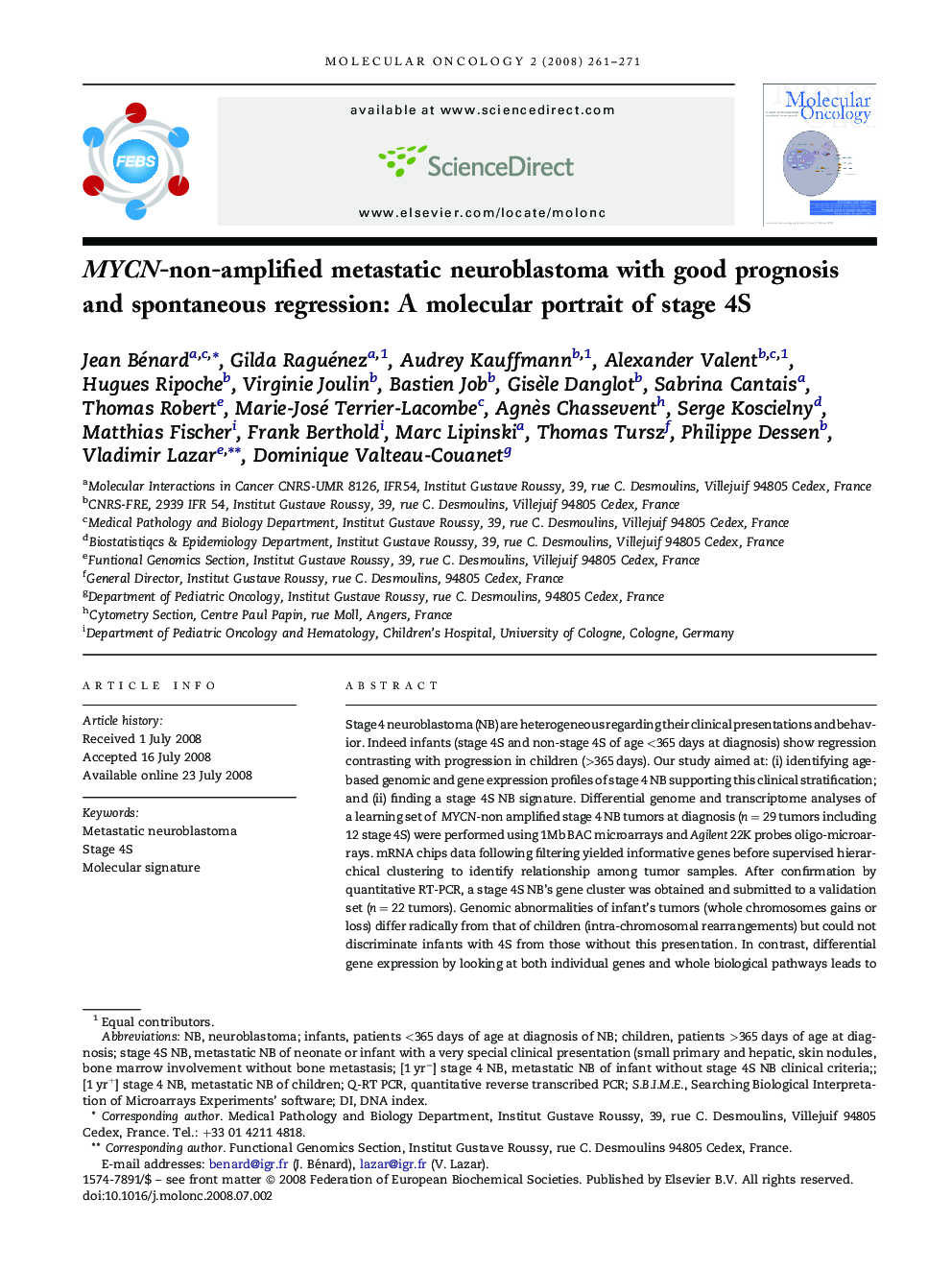| Article ID | Journal | Published Year | Pages | File Type |
|---|---|---|---|---|
| 2145661 | Molecular Oncology | 2008 | 11 Pages |
Abstract
Stage 4 neuroblastoma (NB) are heterogeneous regarding their clinical presentations and behavior. Indeed infants (stage 4S and non-stage 4S of age <365 days at diagnosis) show regression contrasting with progression in children (>365 days). Our study aimed at: (i) identifying age-based genomic and gene expression profiles of stage 4 NB supporting this clinical stratification; and (ii) finding a stage 4S NB signature. Differential genome and transcriptome analyses of a learning set of MYCN-non amplified stage 4 NB tumors at diagnosis (n = 29 tumors including 12 stage 4S) were performed using 1Mb BAC microarrays and Agilent 22K probes oligo-microarrays. mRNA chips data following filtering yielded informative genes before supervised hierarchical clustering to identify relationship among tumor samples. After confirmation by quantitative RT-PCR, a stage 4S NB's gene cluster was obtained and submitted to a validation set (n = 22 tumors). Genomic abnormalities of infant's tumors (whole chromosomes gains or loss) differ radically from that of children (intra-chromosomal rearrangements) but could not discriminate infants with 4S from those without this presentation. In contrast, differential gene expression by looking at both individual genes and whole biological pathways leads to a molecular stage 4S NB portrait which provides new biological clues about this fascinating entity.
Related Topics
Life Sciences
Biochemistry, Genetics and Molecular Biology
Cancer Research
Authors
Jean Bénard, Gilda Raguénez, Audrey Kauffmann, Alexander Valent, Hugues Ripoche, Virginie Joulin, Bastien Job, Gisèle Danglot, Sabrina Cantais, Thomas Robert, Marie-José Terrier-Lacombe, Agnès Chassevent, Serge Koscielny, Matthias Fischer,
